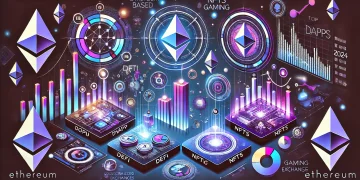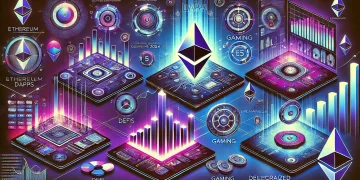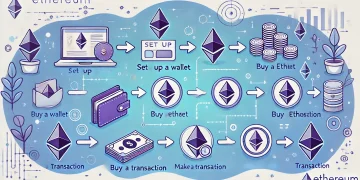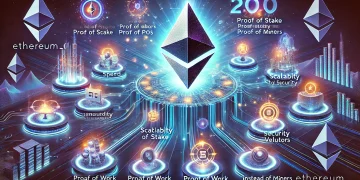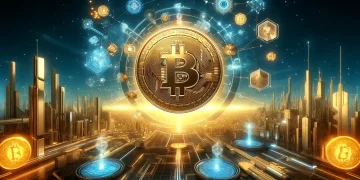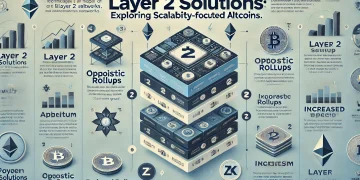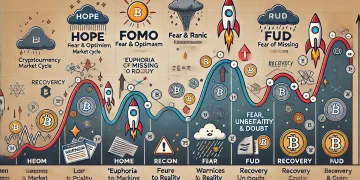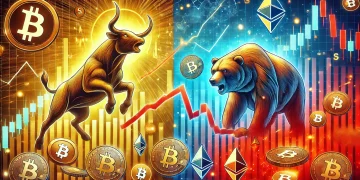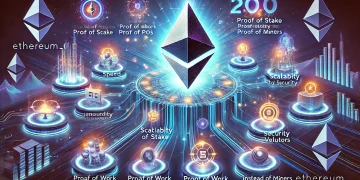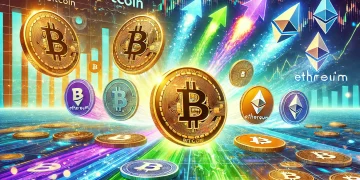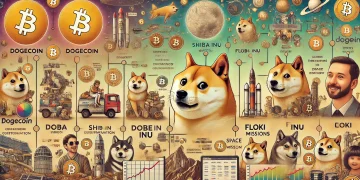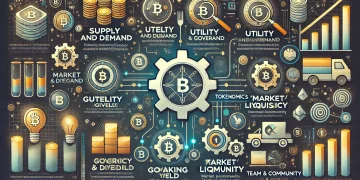In recent years, the world has witnessed an unprecedented surge of interest in Non-Fungible Tokens (NFTs), sparking what many have dubbed “NFT mania.” This phenomenon has taken the art world, gaming industry, and broader digital landscape by storm, leaving many to wonder about the nature of these digital assets and the reasons behind their explosive popularity. In this article, we’ll dive deep into the world of NFTs, exploring their origins, functionality, and the factors driving their meteoric rise in the cultural zeitgeist.
What are NFTs?
Before we can understand the hype, it’s crucial to grasp what NFTs actually are. NFT stands for Non-Fungible Token. Unlike cryptocurrencies such as Bitcoin or Ethereum, which are fungible (meaning each unit is interchangeable with another), NFTs are unique digital assets. Each NFT has distinct properties and values, making it non-interchangeable with any other token.
At their core, NFTs are digital certificates of ownership and authenticity for a particular asset, whether it’s a piece of digital art, a virtual real estate plot in a game, or even a tweet. These certificates are stored on a blockchain, typically Ethereum, ensuring their immutability and traceability.
Key characteristics of NFTs include:
- Uniqueness: Each NFT is one-of-a-kind, even if it represents a copy of a digital file.
- Indivisibility: NFTs cannot be divided into smaller denominations like cryptocurrencies can.
- Transferability: NFTs can be bought, sold, and traded on various marketplaces.
- Programmability: Smart contracts can be used to define how NFTs function or what rights they confer to owners.
The Rise of NFTs
While the concept of NFTs has been around since 2014, with projects like Colored Coins on the Bitcoin blockchain, it wasn’t until 2017 that they started gaining significant traction. The launch of CryptoKitties, a blockchain game where players could breed and trade virtual cats, marked a turning point. The game became so popular that it congested the Ethereum network, highlighting both the potential and the scalability challenges of NFTs.
However, the real explosion of NFT mania occurred in 2020 and 2021. Several factors contributed to this surge:
- COVID-19 Pandemic: With people spending more time online and seeking new forms of entertainment and investment, digital assets became increasingly appealing.
- Mainstream Adoption: High-profile sales, such as Beeple’s “Everydays: The First 5000 Days” selling for $69 million at Christie’s, captured widespread media attention.
- Celebrity Endorsements: Many celebrities and influencers started creating or promoting NFTs, further fueling public interest.
- Speculation: The potential for significant financial gains attracted investors and speculators to the NFT market.
- Blockchain Maturation: Improvements in blockchain technology and infrastructure made it easier to create, buy, and sell NFTs.
Understanding the Hype
The fervor surrounding NFTs can be attributed to several factors that tap into both longstanding human behaviors and new technological possibilities:
1. Digital Ownership and Scarcity
In an age where digital content is easily replicated and shared, NFTs introduce the concept of verifiable digital ownership and scarcity. This appeals to collectors who value uniqueness and provenance. Even though the underlying digital asset (like an image or video) can be copied, the NFT itself remains unique, much like how anyone can own a print of the Mona Lisa, but only one person or entity can own the original.
2. New Revenue Streams for Creators
NFTs offer artists and content creators new ways to monetize their work. By selling NFTs, creators can potentially earn more from their digital creations than through traditional channels. Additionally, many NFT platforms allow creators to earn royalties on secondary sales, providing ongoing revenue streams.
3. Community and Status
Owning certain NFTs can grant access to exclusive communities or events, appealing to people’s desire for belonging and status. For example, owning a Bored Ape Yacht Club NFT not only provides a unique digital avatar but also membership in an exclusive club with various perks.
4. Speculation and Investment
The potential for significant financial returns has attracted many investors to the NFT space. Stories of NFTs being bought for a few dollars and then sold for millions have fueled a gold rush mentality, with many hoping to discover the next big thing.
5. Intersection of Technology and Culture
NFTs represent a fusion of cutting-edge technology (blockchain) with cultural production (art, music, collectibles). This intersection appeals to tech enthusiasts, art lovers, and those interested in the future of digital culture.
6. Gamification and Virtual Worlds
In the gaming world, NFTs offer the ability to truly own in-game assets, potentially even transferring them between different games or platforms. As virtual worlds and the concept of the metaverse gain traction, NFTs are seen as a foundational technology for digital ownership in these spaces.
The Dark Side of NFT Mania
While the hype around NFTs has brought attention to new possibilities in digital ownership and creativity, it has also raised several concerns:
1. Environmental Impact
The energy consumption associated with blockchain networks, particularly Ethereum, has raised environmental concerns. While some NFT platforms are moving towards more energy-efficient solutions, the ecological footprint of NFTs remains a contentious issue.
2. Market Volatility and Speculation
The NFT market has seen extreme price volatility, with some NFTs selling for millions one day and a fraction of that price the next. This volatility, combined with the speculative nature of many purchases, has led to concerns about a potential bubble.
3. Copyright and Intellectual Property Issues
The ease of creating NFTs has led to instances of plagiarism and unauthorized use of others’ work. Determining the true owner of the intellectual property behind an NFT can be challenging, leading to legal disputes.
4. Accessibility and Inclusivity
The high prices of many popular NFTs and the technical knowledge required to participate in the market have raised concerns about accessibility and inclusivity. Critics argue that NFT mania is creating a new form of digital elitism.
5. Security Concerns
As with any digital asset, NFTs are vulnerable to hacking and fraud. There have been instances of NFT theft, fake listings, and other security breaches that have cost buyers and creators significant sums.
The Future of NFTs
As the initial hype around NFTs begins to stabilize, many are questioning what the future holds for these digital assets. While it’s impossible to predict with certainty, several trends and possibilities are emerging:
1. Integration with Physical Assets
We’re likely to see increased integration between NFTs and physical assets. For example, luxury brands are exploring using NFTs as digital certificates of authenticity for physical products.
2. Evolution of Digital Identity
NFTs could play a role in the development of digital identity solutions, allowing individuals to own and control their personal data and online presence.
3. Expansion in Gaming and Virtual Worlds
As gaming continues to evolve and virtual worlds become more sophisticated, NFTs are likely to play a crucial role in representing ownership of digital assets across platforms.
4. Tokenization of Real-World Assets
Beyond digital collectibles, NFTs could be used to represent ownership of real-world assets like real estate or fine art, potentially increasing liquidity and accessibility for these markets.
5. New Forms of Collaborative Creativity
NFTs could enable new models of collaborative creation and shared ownership, potentially revolutionizing how creative projects are funded and managed.
6. Regulatory Developments
As the NFT market matures, we’re likely to see increased regulatory attention, which could bring both challenges and opportunities for the industry.
Conclusion
NFT mania represents more than just a passing trend; it’s a reflection of our increasingly digital world and the evolving concepts of ownership, value, and creativity in the 21st century. While the initial frenzy may subside, the underlying technology and its potential applications are likely to have lasting impacts across various industries.
As with any new technology, the future of NFTs will depend on how they evolve to address current challenges and criticisms. Environmental concerns, regulatory issues, and questions of long-term value will need to be addressed for NFTs to move beyond the hype and become a stable, widely-adopted technology.
Whether you view NFTs as a revolutionary new form of digital ownership or a speculative bubble, there’s no denying their significant impact on our cultural and technological landscape. As we move forward, it will be fascinating to see how artists, technologists, and entrepreneurs continue to push the boundaries of what’s possible with NFTs, potentially reshaping our understanding of art, collectibles, and digital assets in the process.
The NFT mania has opened up a Pandora’s box of possibilities, challenges, and questions about the nature of ownership and value in the digital age. As we navigate this new frontier, it’s crucial to approach it with both enthusiasm for its potential and a critical eye towards its limitations and risks. Only time will tell whether NFTs will become a fundamental part of our digital future or a footnote in the history of technological hype cycles.
FAQs
Q: What exactly is an NFT? A: An NFT, or Non-Fungible Token, is a unique digital asset stored on a blockchain. It represents ownership of a specific item, such as digital art, music, or even virtual real estate. Unlike cryptocurrencies, each NFT is unique and cannot be exchanged on a like-for-like basis.
Q: How do NFTs work? A: NFTs are typically created or “minted” on blockchain platforms, most commonly Ethereum. They contain metadata that describes what the token represents and may include links to digital files. When someone buys an NFT, the ownership is recorded on the blockchain, creating a verifiable record of authenticity and provenance.
Q: Why are some NFTs so expensive? A: The high prices of some NFTs can be attributed to various factors, including the reputation of the creator, the perceived cultural or historical significance of the work, scarcity, and speculative investment. Like traditional art, the value of NFTs is often subjective and influenced by market demand.
Q: Can’t someone just copy a digital file that an NFT represents? A: Yes, the digital file itself can often be copied. However, the NFT represents ownership of the “original” digital asset, much like how anyone can own a print of a famous painting, but only one person can own the original. The value lies in the provable ownership and authenticity that the NFT provides.
Q: Are NFTs bad for the environment? A: Many NFTs, particularly those on the Ethereum blockchain, have been criticized for their environmental impact due to the energy-intensive nature of blockchain transactions. However, efforts are being made to develop more energy-efficient blockchain solutions for NFTs.
Q: Can NFTs be used for anything other than digital art? A: Yes, NFTs have a wide range of potential applications beyond digital art. They can represent ownership of in-game items, virtual real estate, music rights, event tickets, identity verification, and potentially even physical assets in the future.
Q: Are NFTs a good investment? A: Like any investment, NFTs carry risks. While some NFTs have sold for large sums, many others have lost value. The market is highly volatile and speculative. Potential investors should do thorough research and be prepared for the possibility of losing their investment.
Q: How do I buy or sell NFTs? A: NFTs can be bought and sold on various online marketplaces, such as OpenSea, Rarible, or Nifty Gateway. Typically, you’ll need a digital wallet and some cryptocurrency (often Ethereum) to participate in these markets.
Q: What are the risks associated with NFTs? A: Risks include market volatility, potential loss of value, security concerns (such as hacking or fraud), regulatory uncertainty, and technological risks (such as the potential loss of access to the digital asset if the hosting platform goes offline).
Q: Will the NFT craze last? A: While the initial hype around NFTs may subside, many believe that the underlying technology and concept of digital ownership will have lasting impacts. The long-term viability of NFTs will likely depend on how they evolve to address current challenges and criticisms.

